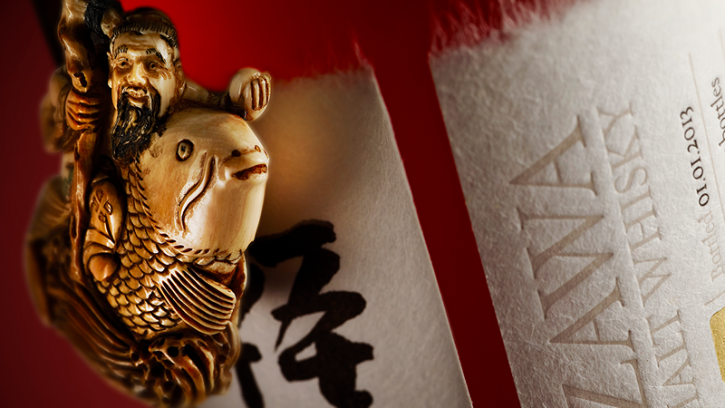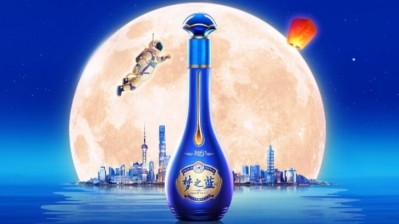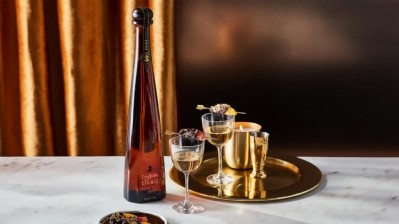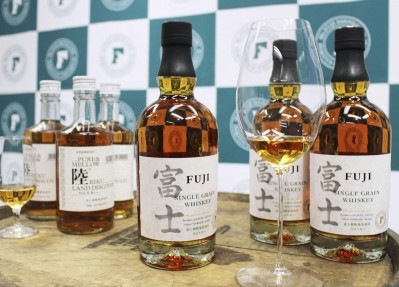Rapid rise: Rare packaging and government support driving ongoing Japanese whiskey growth

Japanese whiskey had been overshadowed for many years by its more well-known counterparts such as Scotland and Ireland – but over the past few years there has been a concerted effort in the country to revive and grow the category.
Kirin, better-known for its beer products, is one company that has enjoyed success with its FUJI brand, both at home and overseas.
“’Japanese whiskey’ officially saw formalised terms and standards defined by the Japanese government in 2021, and this has helped to attract attention and growth in both domestic and overseas markets over the past few years,” FUJI Brand Ambassador Yusuke Suzuki told FoodNavigator-Asia.
“Even before this, we saw that Japanese whiskey exports have been growing in value for 17 consecutive years, with a 14-fold increase in the past decade. Our aim is to increase overseas sales ratio for the FUJI brand to 50% by 2025.”
In addition to laying out a fixed definition for the category, the government has also made locally-produced whiskey a key priority export item, which has served to garner more support for Japanese whiskey as a whole.
“Whiskey was selected as one of Japan’s priority export items by the government, which means that there has been support by public and private sectors in a concerted effort to promote growth,” he added.
“With this focus on promoting Japanese whiskey all over the world, at this stage we do not want to localise the brand [in each export market] but instead to present a common image and original taste everywhere.”
Japanese whiskey actually has a 100-year history, with many brands and distilleries having come and gone throughout this period due to low recognition or sales for a variety of reasons.
One of these was Karuizawa, once Japan’s smallest – and most exclusive – distillery, which shuttered back in 2000. However, six years later another alcohol firm that had bought over its remaining stock started to sell single cask bottlings, including from a 1960 cask that yielded 41 bottles of what is now known as one of the world’s ‘oldest and rarest’ Japanese whiskeys.
“At the time, there was little interest being shown in Japanese whiskey and the category was as a whole considered to be ‘stuttering’, for lack of a better word,” packaging design firm Contagious Founder and Managing Director Matt Chapman told us.
“So being the oldest and rarest at the time was not a strong enough draw for consumers, and the Number One Drinks Co. (who bought the 1960 cask) wanted there to be a stronger element of attraction, including packaging that represented the language, art and culture.
“We designed specialised boxes for each bottle in the Japanese traditional style and engaged a calligrapher to inscribe the unique kanji inscriptions named after a different netsuke (Japanese good luck charms), making each packaging the rarest and most unique of its kind in the world, not counting how rare the whiskey itself already was.
“This started as a project to make the whiskeys rare, but eventually really helped to reignite the whole category – we saw that after this, between 2013 and 2020, the sales volumes of Japanese whiskey exports started climbing and increased by some 233% over the years.
“Karuizawa is generally acknowledged in the industry to be the catalyst of the Japanese whiskey resurgence, and packaging has definitely played a major role and provided that major halo effect in the entire process.”
Engaging with younger consumers
Today, even though not every packaging design can be credited with reviving an entire category, Chapman stressed that in the alcohol sector the importance of this is higher than ever before as alcohol content alone is no longer enough to engage with younger consumers.
“We know that younger consumers, particularly those below the ages of 26, are drinking less alcohol compared to the millennials or Gen X ones,” he said.
“One of the reasons here is that they are becoming more discerning, and with industry competition also growing it is more important than ever for brands to attract and retain consumers, making them loyal purchasers somehow.
“There can be no doubt that packaging plays a strong role in building strong relationships with consumers, and this needs to be done in conjunction with making a statement of what the brand stands for, how it is leading the sector, and how it is inspiring better choices as consumers also expect brands to care for them.
“Basically, they want more and without taking these factors into account, it will be very tough to not only draw them in but also make them repeat purchasers.”









